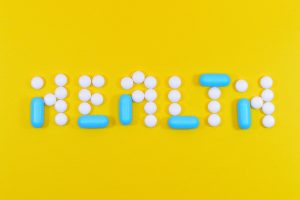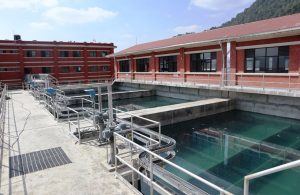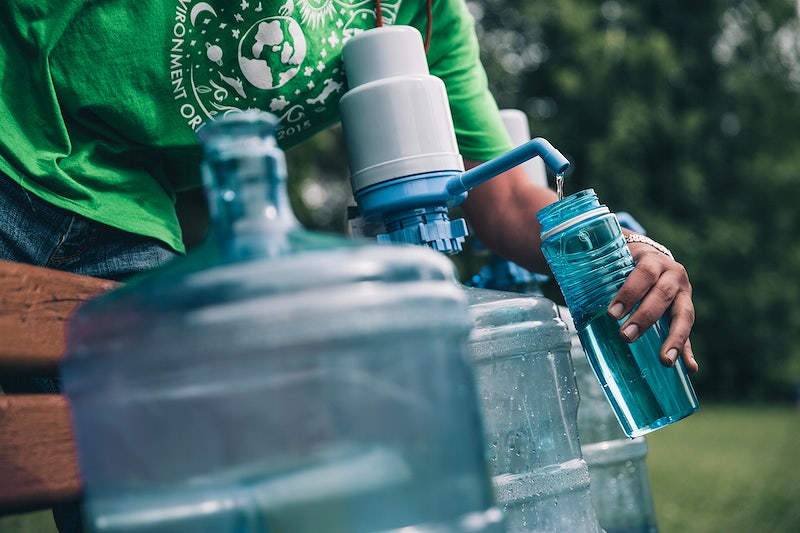
Some two years ago, I was participating in a mountain bike race in Kathmandu. The day was hot, the race grueling. No sooner I finished the race than words got around that a mishap had taken place–a 22- year-old young contestant collapsed during the race.
Next thing I heard–he died on the way to a hospital. The cause of the death: severe dehydration compounded by heat stroke.
That was very sad–an unprecedented incident in the 20-year history of mountain biking event in Nepal. Evidently, it was but gross negligence on the part of the young fellow not to have drunk enough water or fluids to hydrate his body before the race, or else he would not have lost his life.
Incredulous as it may sound; our body is constituted of 60 to 70 per cent water, the children’s closer to 75 per cent. “We are walking water or H20”, writes Brian Richter of The Nature Conservancy and University of Virginia, USA.
In the Journal of Biological Chemistry, HH Mitchell claims, “The human brain and heart are composed of 73% water, the lungs about 83% water, the skin 64%, the muscles and kidneys 79%, and the bones 31%.”
So it is quite obvious our body needs water, lots of it–more so, when engaged in some intense workout, heavy physical work or during hot summer days–and if it is in short supply, we get dehydrated. If not taken seriously, it can even lead to life-threatening results.
What’s dehydration?
Given that our body is constituted of two-thirds of water, our body cells need a perennial supply of water or fluids to keep them functional. It is not only the athletes or those who do rigorous workouts, or for that matter persons involved in heavy manual work tend to get dehydrated–anyone can.
Even simple daily activities such as breathing, urinating, defecating and sweating expend the fluid in our bodies. And if we do not replace the lost fluid, we get dehydrated. In other words, dehydration occurs when the body expels more fluids and electrolytes than it produces.
Dehydration levels can be either mild or moderate but, if taken for granted, can turn severe. More often than not, we fail to understand that simple ailments like headache, lethargy or constipation could be a case of mild dehydration. Especially, the children, the elderly (they often do not feel thirsty until they are already dehydrated) and, obviously, the athletes are more susceptible to dehydration.

Causes
We all get dehydrated one time or another in course of our daily routine life. For very simple reasons, we forget or overlook the significant aspect of refuelling our body with the much-needed water and fluids that we use up rapidly. We are either too busy in our work, travelling, hiking or camping, where potable water is not readily available. Other reasons include:
- Diarrhoea or vomiting
If struck by a bout of diarrhoea or vomiting, either of it can cause a significant amount of water loss in the body, more so if both occur at the same time, which leads to rapid draining of body electrolyte and minerals.
- Fever
An elevated body temperature or fever normally caused by a common cold, influenza, viral or bacterial infections tends to make you sweat more resulting in a loss of body fluids. Occurrence of such fevers causes the body’s metabolic rate (BMR) to go up.
- Excessive sweating
If you subject yourself to heavy vigorous work or exercise, you rapidly lose body fluids. In hot humid conditions, this applies even more. Failure to replenish the lost body fluids triggers off dehydration.
- Frequent urination
Frequent urination can be attributed to unstable diabetic conditions or a prolonged use of certain drugs such as diuretics (water pills)–a common cause of dehydration.
Symptoms
The early or mild/moderate symptoms of dehydration can be:
- Thirst
- Dry mouth
- Less urination
- Dark-colour urine
Failing to replenish the body with enough fluids can progress to other symptoms like:
- Weakness and fatigue
- Light-headedness
- Muscle cramps
- Increased palpitations
- Dry skin
- Nausea
- Dry nose/eyes
- Drowsiness
- Bad breath (due to less secretion of saliva)
No need to get overly alarmed, if you get mild or moderate dehydration. It can be easily reversed. All you have to do is restore the lost liquid by increasing your fluid intake by taking more water, other fluids and foods that contain water or H2O.
It is, however, a different story in the case of severe dehydration, nothing to be taken lightly. It is an emergency and requires immediate medical attention. If not addressed on time, it can have dire consequences–even death.
Severe dehydration, besides the aforementioned symptoms, can include:
- Muscle spasms
- Vomiting
- Extreme thirst
- Black colored stool
- Rapid breathing/heartbeat
- No tears when crying
- Fever and chills
- Irritability and confusion
- Rapid heartbeat
- Delirium or unconsciousness
- Vision problems
- Loss of consciousness
- Electrolyte imbalance
- Kidney and liver failure
Severe cases of dehydration can lead to serious complications such as heat injury.
The more dehydrated you are, the greater is the possibility of contracting heat injury. If the mildest of dehydration can cause heat cramps, the advanced stage can cause heat exhaustion, resulting in nausea, dizziness, loss of coordination and anxiety.
The next stage of dehydration called the heat stroke can be too extreme–the situation wherein the body’s cooling system collapses completely and the body temperature rises dangerously. If not medically attended or untreated immediately, it can be potentially fatal. More than 20 per cent of heat stroke victims are likely to die.
Prolonged conditions of acute dehydration can have other life-threatening results such as kidney failure, seizures, blood clots, hypovolemic shock and coma.
Staying hydrated: listen to your body
The rule of thumb for keeping yourself hydrated is to drink enough water. The simplest way is to watch if you get the first signs of thirst or the colour of your urine changes from almost clear with a tinge of yellow to darker one. That said all you have to do is just drink plenty of water.
How much to drink?

Now the question arises: How much to drink. That is a kind of tricky proposition as you may be showered with a deluge of recommendations that might baffle you. For some, no more than eight glasses a day might be enough, but others might need more.
Certain factors such as physique, metabolism, environment or weather (you need to drink more in warmer climates), physical activity and the foods you eat resolve how much water your body needs. Consequently, 1.5 to 2.5 liters of water for us is the ideal quantity to keep us well hydrated.
You may not be aware but it is a fact that some fruits contain loads of water. “In fact, some fruits and vegetables are more than 90 per cent water — including cantaloupe, strawberries, watermelon (of course), cucumber, celery, lettuce and leafy greens, zucchini, tomatoes, and bell peppers,” says Johannah Sakimura, a registered dietician based in New York metro area. Other foods with high water content include: oranges, pineapple, cauliflower, tomatoes, and spinach. Intake of such food covers nearly 20 per cent of our daily dose of water intake.
If you find the idea of drinking 2 liters of water a day a tad daunting, it can partially be substituted by milk, fruit juice, herbal teas and even caffeinated drinks — such as coffee and soda. Sportsmen or athletes go for sports drinks easily available. “But water is your best bet because it’s calorie-free, inexpensive and readily available.”
So beat dehydration to the punch, always keep a water bottle handy! Stay hydrated–and healthy!
























